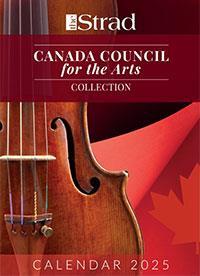While most string players agree that scales and arpeggios are the basic building blocks for good technique, cellist Robert Jesselson says that it’s essential to practise them sequentially to gain the maximum benefit

Discover more Featured Stories like this in The Strad Playing Hub
Read more premium content for subscribers here
A few years ago I heard an audition by a cellist who had been a long-time student of the principal cellist of a major orchestra. I was excited, thinking this student would be playing at a high level, having studied with such a wonderful performing musician. Unfortunately his playing was a disaster. He played the first movement of the Haydn C major Concerto. When I asked him what technique he had studied, what etudes he had worked on, and what scale systems he used, he answered that he had only studied repertoire.
It was clear that he had no fundamental understanding of tone production, intonation, shifting or vibrato except as related to the particular piece he was playing. He clearly didn’t understand scales and arpeggios. There was no global knowledge of technique which he could then apply to different styles of playing, and he was incapable of making informed decisions about interpretation, aside from copying what his teacher was doing in that particular piece. His teacher was of the mindset that one can learn technique through repertoire.
This is an example of what I call ‘Random Teaching’. Often teachers like this have had good training themselves (and hence are playing at a high level), but have forgotten how they themselves were taught when they were young. They want to work at an advanced level of artistry, but don’t remember that they went through the process of learning technique by studying scales and etudes, and working on pieces that were appropriate for their level. Rather than having an organised syllabus, they will often assign pieces that they are working on themselves, or just react to whatever the student brings to the lesson. And often they are teaching as a sideline to their main performing job, with minimal focus on the real needs of the student.
String students should first be able to play two-octave scales in all keys
Learning to play an instrument is not unlike how we learn other things. We learn to crawl before we walk, and we walk before we run. Maths students learn how to add and subtract before they start algebra, and they learn algebra before calculus. Similarly, string students should first be able to play two-octave scales and arpeggios in all keys from memory with a healthy sound and accurate intonation before they play the three-octave Galamian system of scales.
Cellists need to chew on a regular diet of Dotzauer, Lee and Duport etudes before they play Popper op.73 etudes, and they probably should play op.76 before op.73! And they definitely need to have played something like the Goltermann G major Concerto before trying to play the Haydn C major Concerto.
We all know the importance of practising scales and arpeggios. They are the most basic building blocks for cello technique, and for music itself. As Theodore Buchholz and I point out in our book The Cellist’s Guide to Scales and Arpeggios, an effective sequential approach to scale work for cellists might be: basic one-octave scales/arpeggios; two-octave Feuillard scales/arpeggios; basic thumb position scales in one octave across strings; three-octave scales and four-octave arpeggios; scales on one string with two- and then three-finger groupings; the universal fingering system; and then three-octave scales with the Galamian system. Along the way it would be good to do modules of chromatic scales, octatonic scales, whole-tone scales and modal scales. Finally, major and minor scales in 6th, 3rds and octaves. This would be one possible sequence of scales that would build a cellist’s technique gradually and systematically.
According to musicologist Nicolas Slonimsky, there are at least 1,330 different types of scales – enough material for a daily journey into the joy of practising scales and arpeggios, and a lifelong meditation on the fundamental elements of music.
Read: How to make scales enjoyable
Read: A lifetime journey of learning: the cellist’s guide to scales and arpeggios
Discover more Featured Stories like this in The Strad Playing Hub
Read more premium content for subscribers here
The number one source for playing and teaching books, guides, CDs, calendars and back issues of the magazine.
In The Best of Technique you’ll discover the top playing tips of the world’s leading string players and teachers. It’s packed full of exercises for students, plus examples from the standard repertoire to show you how to integrate the technique into your playing.
The Strad’s Masterclass series brings together the finest string players with some of the greatest string works ever written. Always one of our most popular sections, Masterclass has been an invaluable aid to aspiring soloists, chamber musicians and string teachers since the 1990s.
The Canada Council of the Arts’ Musical Instrument Bank is 40 years old in 2025. This year’s calendar celebrates some its treasures, including four instruments by Antonio Stradivari and priceless works by Montagnana, Gagliano, Pressenda and David Tecchler.





































No comments yet